Evergreens lend a characteristic mountain-forest look to gardens and landscapes in the Rocky Mountain region and beyond. White spruce (
Picea glauca), native to northern forests throughout North America, has the classic conical Christmas-tree silhouette, with pendulous branches and evergreen foliage that shimmers with a touch of silver-blue.
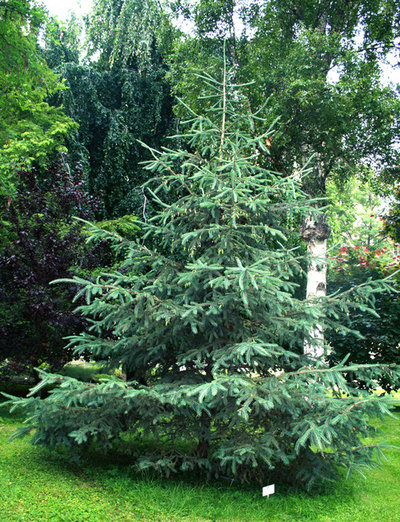 Botanical name: Picea glaucaCommon name:
Botanical name: Picea glaucaCommon name: White spruce
Origin: Native across North America from the boreal forests of the Yukon to Canada’s Maritime provinces, south to the Rocky Mountains in Wyoming and the Black Hills of South Dakota
Where it will grow: Hardy to minus 40 degrees Fahrenheit, or minus 40 degrees Celsius (USDA zones 2 to 6; find your zone)
Water requirement: One of the most drought-tolerant spruces, white spruce tolerates some summer drought once established; needs winter snow cover or monthly watering if the winter is dry
Light requirement: Full sun to partial shade
Photo by Karelj
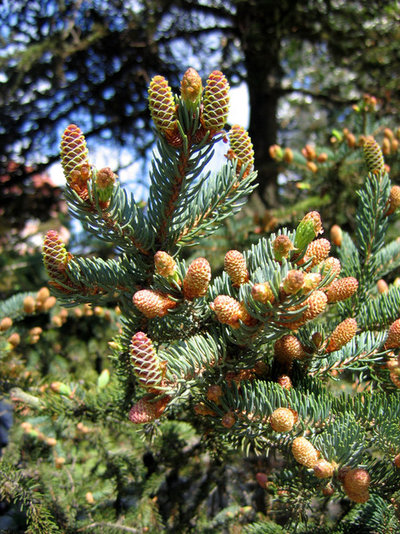 Mature size:
Mature size: 20 to 80 feet tall and 4 to 12 feet wide, depending on the cultivar
Benefits and tolerances: Fairly deer-resistant; evergreen foliage for year-round color, shade in summer and windbreak in winter; shelter, nesting habitat and year-round food for wildlife
When to plant: Late summer and fall
Shown: Buds and young cones on white spruce
Photo by Agnieszka Kwiecień, license: CC-BY 3.0
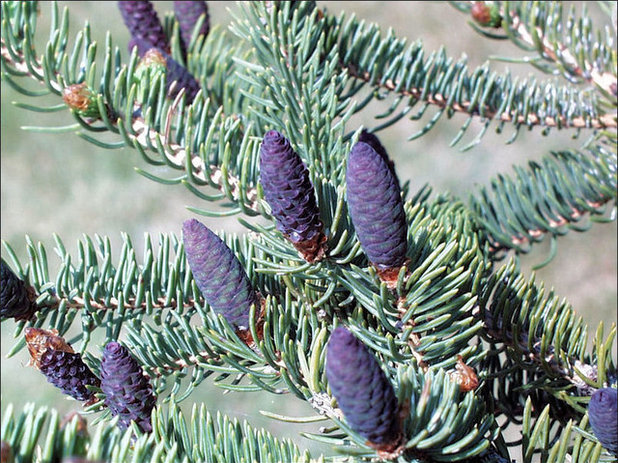
Paul Wray, Iowa State University
Seasonal interest: Silvery-green needles are especially beautiful in winter; pale green buds in spring; cones that are purple in summer and turn brown in fall
Distinguishing traits. A conical shape, regular branching pattern and graceful weeping branches (in maturity) contribute to white spruce’s beauty. The relatively narrow profile and drooping branches of white spruce distinguish it from other evergreens and make it more suitable for smaller spaces. Drooping branches also allow it to shed snow more easily and make it less subject to windthrow (when a tree is uprooted and thrown over by wind) and snow breakage.
White spruce offers prime habitat for smaller wildlife, especially songbirds like juncos, chickadees and yellow-rumped and other warblers, which glean insects from the bark and needles. Woodpeckers drill into the trunks (without harming them) to feed on beetle larvae; pine grosbeaks and other seed-eaters eat papery seeds from the cones in fall and winter. The dense evergreen foliage offers shelter for bird nests in summer and in winter provides thermal cover, especially during storms.
White spruce is one of the primary lumber trees of the boreal forests. Wood from old-growth trees is used for musical instruments, including piano sounding boards and violins.
It is one of the most tolerant spruce species for wind, heat, cold and drought conditions. Once established, white spruce is also fairly deer-resistant.
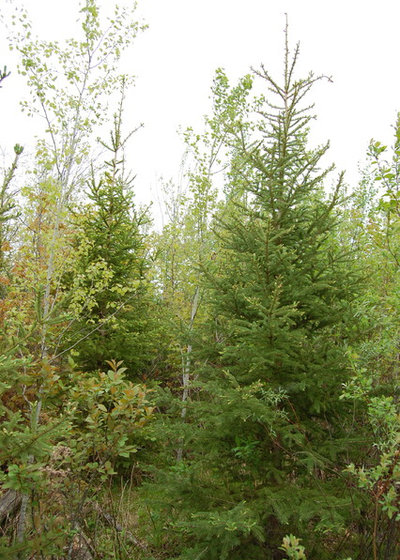
Eli Sagor
How to use it. White spruce shines as a focal point in the landscape, although it can also be planted en masse for privacy. Plant it in a spot where its summer shade will provide welcome natural coolness. As with any evergreen tree, avoid planting where the canopy and roots will create dry shade and harm lawn areas or garden beds.
Planting notes. For best results, plant white spruce in late summer — in the northern parts of the region — or early fall — in the southern parts — while the soil is still warm to promote root establishment before spring brings wind and heat.
The tree prefers sandy or loamy soils; if planting in clay, mix in enough organic matter first to improve moisture retention and soil texture. White spruce thrives in full sun but will also do well in partial shade, and with the trees even planted as close as 10 feet apart (4 feet for the narrow-profile cultivar ‘Pendula’)
for a hedge or wind screen.
If plants have become pot-bound, or root-bound, in their containers, make sure to “unwrap” the roots, carefully straightening out any larger roots that have curled around the bottom of the root ball, so they grow outward to stabilize the growing tree.
Shown: White spruce in the foreground with quaking aspen (
Populus tremuloides)
and northern red oak (
Quercus rubra)
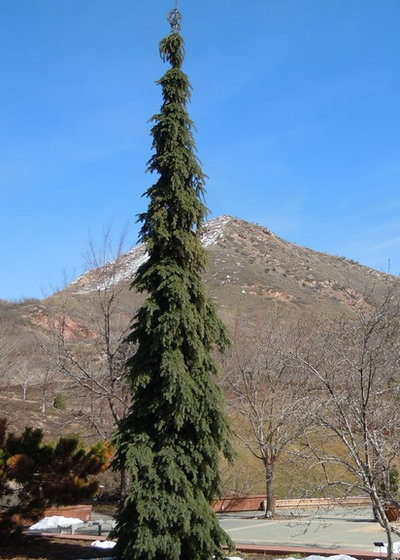
Plant Select®
Selected cultivar: P. glauca ‘Pendula’ is an excellent choice for a sculptural evergreen in a smaller space. It grows to 24 feet tall, has weeping branches and stays narrow, at 4 to 6 feet wide.





